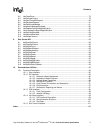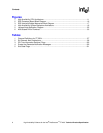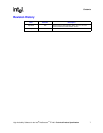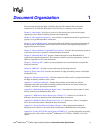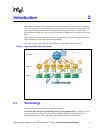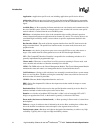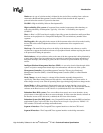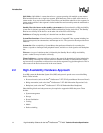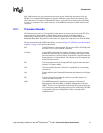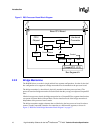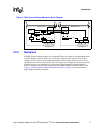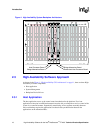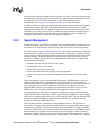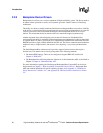
High Availability Software for the Intel
®
NetStructure
TM
ZT 4901 Technical Product Specification 13
Introduction
Handover—A type of switchover that is initiated by the Active Host, resulting from a software
command or Baseboard Management Controller detected fault wherein the bus segment is
quiesced before the transfer of system slot functions.
HA SDK—High Availability Software Development Kit
High-Availability (HA) system—Constructed from standard components with redundancy to
reduce the probability of interruptions. Typically, “five nines” of availability are expected
(99.999%).
Host—A Host is a CPU board that is capable of providing system slot functions and System Host
functions to the peripherals in a CompactPCI backplane. This can include any number of bus
segments.
Hot Pluggable—Hot pluggable in the context of this document refers to the driver model used by
devices that reside on the backplane that allows for asynchronous driver suspension and
resumption.
Hot Swap—The term Hot Swap refers to the ability of the hardware and software to work in
conjunction to support the insertion and removal of peripheral boards without requiring the chassis
to be powered-off during the operation.
Hot Switchover—A hot switchover refers to the state of the bus segment that is being inherited by
a newly Active Host. On a hot switchover bus ownership is transitioned and upon unmasking of
backplane interrupts, and enabling of grants, the bus is allowed to operate without any recovery
actions.
Intelligent Platform Management Interface (IPMI)—A two-wire electrical bus through which
system- and power-management-related chips can communicate with the rest of the system.
Management Controller—System Management Controller. This may be a Baseboard
Management Controller (BMC), a Satellite Management Controller (SMC) or a Dual Domain
Controller.
Mode Change—A mode change is a change in Host domain ownership characteristics,
specifically, when Hosts change between Active/Active, Active/Standby, or Cluster modes. A
mode change can only occur when all operating Hosts agree through negotiation to change modes.
Owner Mode—A Host operating in Owner mode owns one or more domains. At any given
moment of time, one domain can be owned by no more than one Host. If a Host owns the domain,
software on the Host has access to PCI devices in (or behind) the PCI slots of the domain.
Redundant Host (RH) system—Two or more Hosts that control one or more domains. At any
given instant, no more than one Host can own one domain. If a Host owns the domain, software on
the Host has access to PCI devices in (or behind) the PCI slots of the domain.
Redundant System Slot (RSS) board—Any CompactPCI board that meets the RSS bus interface
requirements in the CompactPCI Hot Swap Infrastructure Interface Specification, PICMG 2.12.
This includes CPU boards and bridge mezzanine boards.
Segment A Interface—The CompactPCI bus segment interface on the base CPU board.
Segment B Interface—The CompactPCI bus segment interface on the bridge mezzanine.



